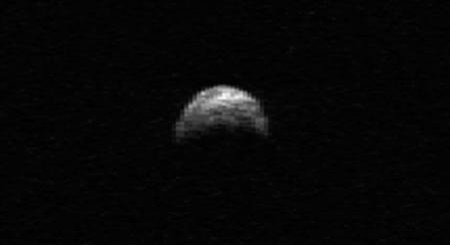
National Aeronautics and Space Administration (NASA) has previously announced that as part of the organization's Planetary Science Division, the Planetary Defence Coordination Office (PDCO) was put together to strategize against life-ending events that may possibly hit Earth and may be the end of the world.
The main objective of the PDCO is to keep track and record Potentially Hazardous Objects (PHO) like comets and asteroids that may pass through and hit the planet.
However, the team is not only focused on monitoring these but are also trying to simulate possibilities of these PHOs to appear without us noticing and to study how to divert the path of a rock from space while also looking at possibilities and consequences of one hitting in the future.
Last year, "Wired", a YouTube channel, explained what really is happening and what the project is for. In the video, Wired's Robbie Gonzales talked about the existence of the Planetary Defence Conference and what it exists to do. Gonzales revealed that scientists are focusing on the sole purpose of figuring out how to avoid an asteroid that is hurling towards the Earth. Moreover, the YouTuber also revealed that no such asteroid exists.
In answer to this revelation, PDCO's Cathy Plesko, a planetary scientist from Los Slamos revealed that they make simulations or models of asteroids and a number of possible outcomes through the use of supercomputers to better equip themselves in the future and explained the importance of the project.
Pesko compared the project to a fire drill or drills in a plane where they explain how to use the oxygen masks. She also revealed that the division practices this every two years.
According to her, this is how we can learn through practice and from our mistakes. She added that now is the best time to do this since this is the first time that we have the capabilities and we have already failed a few times.
Also read: Coronavirus Death Toll Rises, Sparks End of the World Theories
Also, Dr. Plesko said that even though there is more work to be done before NASA can say that we can confidently prevent an asteroid from hitting Earth, it looks like the space organization is almost there. However, there are still technologies that are yet to be developed and things we still need to study about how asteroids respond to a laser shot or a kinetic impactor hit or a nuclear device ablating it.
In 2010, Scientist Maria Eugenia Sansaturio studied that 1999 RQ36 or Asteroid 101955 Bennu, a PHO, may hit Earth. NASA, however, has other plans for Bennu. With the use of the agency's OSIRIS-REx spacecraft, they are currently in a mission to find out more about the rock that may cause Earth's end. OSIRIS-REx has spent two years tailing Bennu and another two years orbiting it to take samples.
The spacecraft is expected to comeback to earth in 2023. This will give scientists a chance to study the composition of asteroid 1999. The agency and it's scientists are interested in the role of these carbon rich, primitive and dark asteroids in creating life on Earth. Also, It will also help to calculate the odds of Bennu hitting the planet and stopping the end of the world.
© 2025 HNGN, All rights reserved. Do not reproduce without permission.








